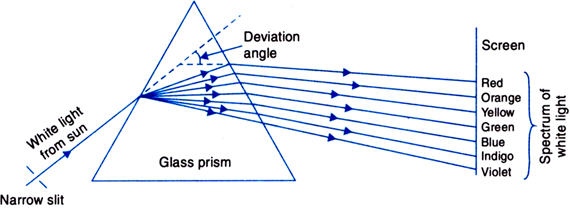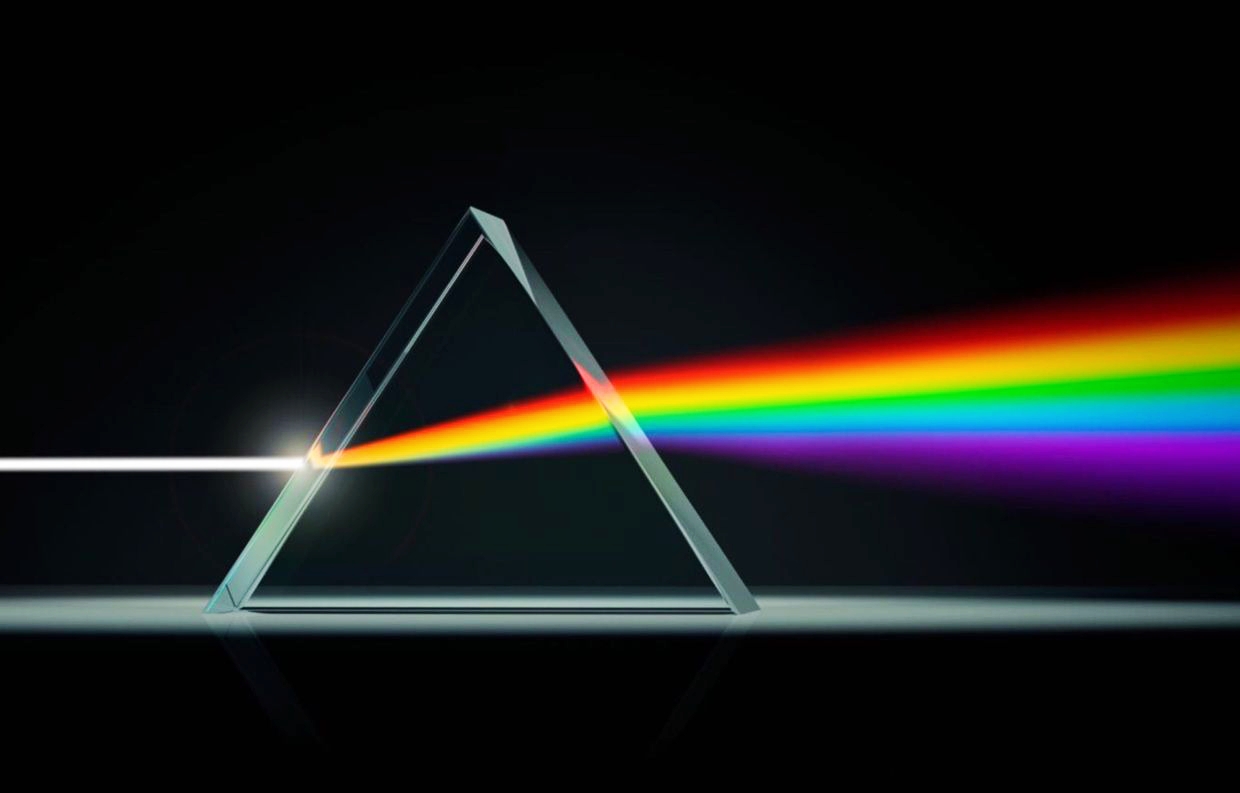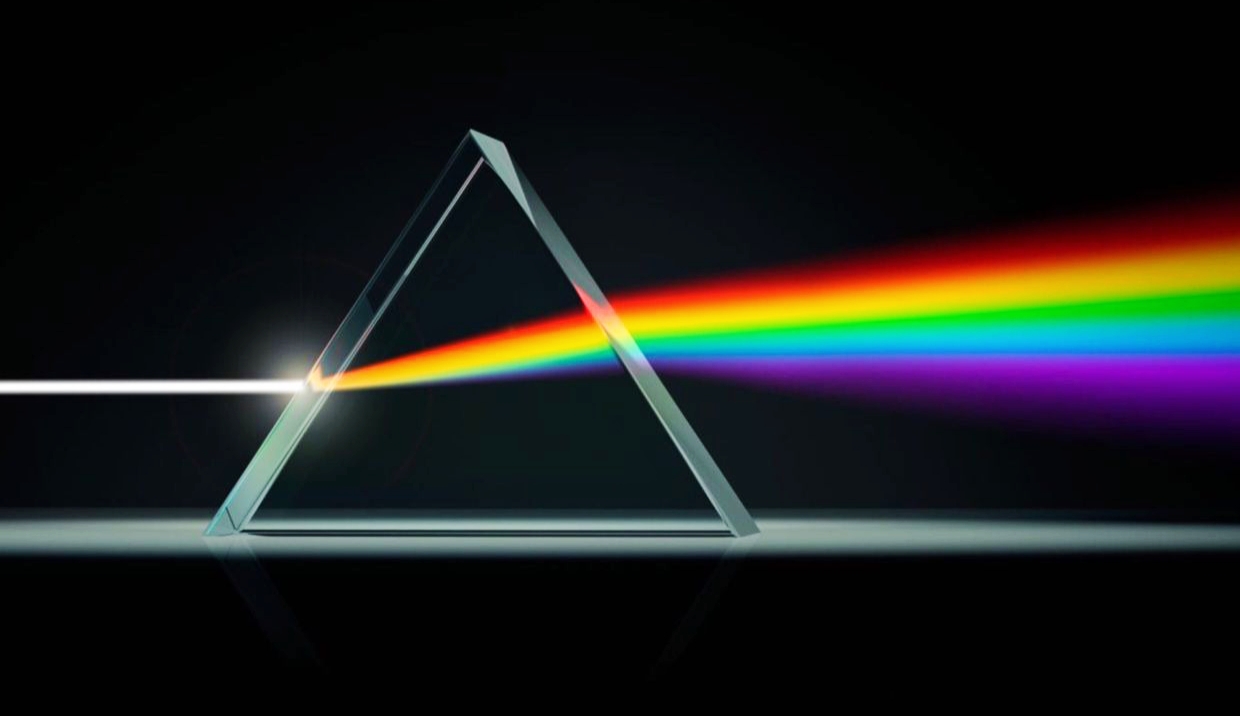Dispersion by a prism :-
When white light ( Sun light ) is incident on a glass prism, the emergent light is seen to be consisting of several colours, the phenomenon of splitting of light into several component colours is known as dispersion.

The different component colours that appear in sequence are violet, indigo, blue, green, yellow, orange and red i.e. VIBGYOR.
The red light bends the least while violet light bends the most.
- The pattern of colour components of light is called the spectrum of light. Colour is associated with wavelength of light. In the visible spectrum red light is at the longer wavelength ( about 700 nm ) while violet is at short wavelength ( about 400 nm ).
Dispersive power :-
The dispersive power of a prism is defined as the ratio of angular dispersion to the mean deviation produced by the prism.

If mean deviation ‘δy’ = ( μy – 1 ) A
Angular dispersion ‘δᵥ – δᵣ’ = ( μᵥ – μᵣ ) A
Where, μy → Refractive index of yellow colour for the prism,
μᵥ → Refractive index of violet colour for the prism.
μᵣ → Refractive index of red colour for the prism.
δᵥ→ Angle of deviation for the violet colour.
δᵣ → Angle of deviation for red colour.
A → Refracting angle or the angle between two faces AB and AC
then,
Dispersive power = Angular dispersion / Mean deviation
i.e. ω = ( δᵥ – δᵣ ) / δy
= ( μᵥ – μᵣ ) Α / ( μy – 1 ) Α
Or ω = ( μᵥ – μᵣ ) / μy – 1
Dispersive power is depends on the refractive index of red colour and the refractive index of violet colour for a prism . Dispersive power is also depends on the refractive index of yellow colour for a prism .
Angular Dispersion :-
It is defined as angle between the two extreme colours of light. i.e. violet and red colours.
Angular dispersion = δᵥ – δᵣ
i.e. θ = δᵥ – δᵣ
Deviation without Dispersion :-

Deviation produced by flint glass prism for a colour is equal and opposite which produced by crown glass prism.
As a result, when the seven colours of light comes out through the flint glass prism, they combine to give a white light. Hence, there is no dispersion of light. This combination of prism is called achromatic combination of prism.
Dispersion without deviation :-

When the white light is incident on the crown glass prism, it is deviated as well as dispersed which fall on the flint glass prism. The deviation produced by crown glass prism for mean colour is equal and opposite to that produce by flint glass prism. So net deviation produce by the combination for mean colour is zero.
- The deviation produce by crown glass for mean colour is δ = Α ( μ – 1 ).
Net deviation should be zero
i.e. δ + δ’ = 0
or Α ( μ – 1 ) + { – A’ ( μ’ – 1 ) } = 0
or A ( μ – 1 ) = Α’ ( μ’- 1 )
or A / A’ = μ’- 1 / μ – 1
Question 1. A thin prism having refracting angle 10⁰ is made of glass of refractive index 1·45 . This prism is combined with another thin prism of glass of refractive index 1·7 . This combination produces dispersion without deviation. The refracting angle of second prism should be–
solution.
A = 10⁰
μ = 1·42
μ’ = 1·7
Α’ = ?
A’ / A = μ – 1 / μ’ – 1
Α’ = ( μ – 1 ) / ( μ’ – 1 ) A
= ( 1·42 – 1 /1·7 – 1 ) 10⁰
A’ = 6⁰








